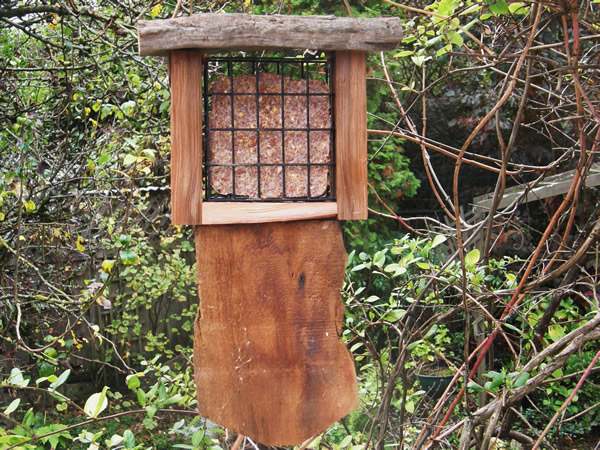 |
||
This suet feeder was made for woodpeckers, the long tail board to help these larger birds use their tails as a support. |
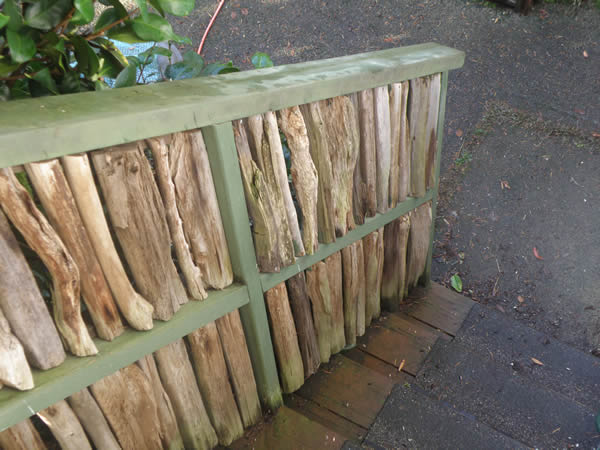 |
||
We decided to make one out of the vast amount of driftwood that gets washed up onto the beaches. |
||
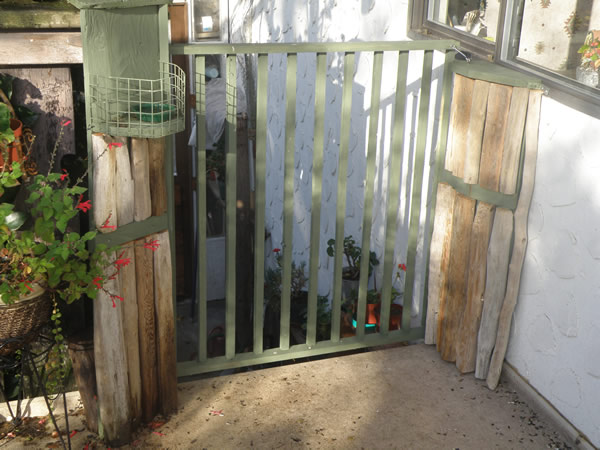 |
||
A couple of projects have used this free supply of materials. |
||
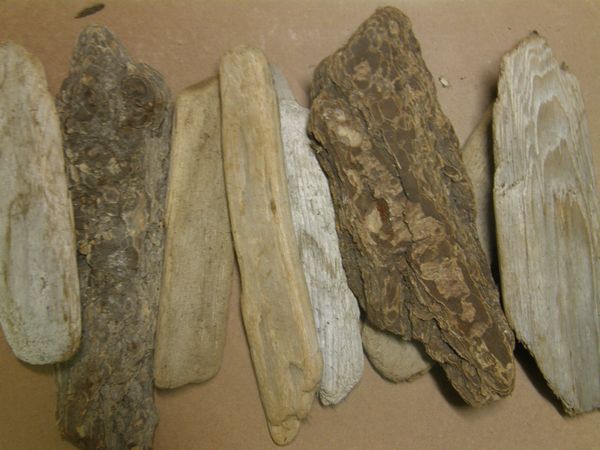 |
||
Being by the sea, wood of every size, from these 9 or 10 inch pieces to 20 foot logs are washed up. These pieces can be picked up by the sack full. |
||
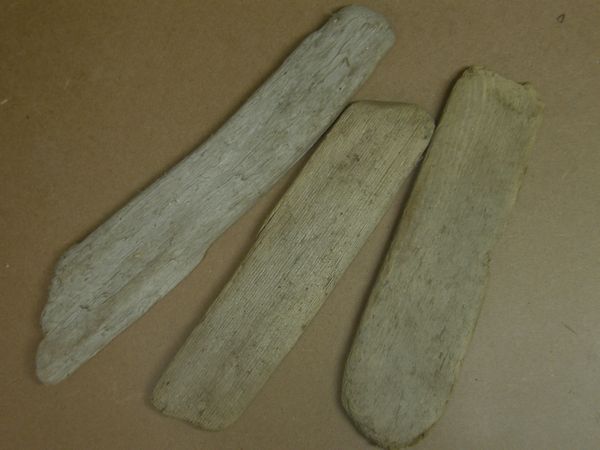 |
||
Picking out two pieces for the sides and another for the bottom. Store wood can be substituted by those who don't have this abundance to choose from. |
||
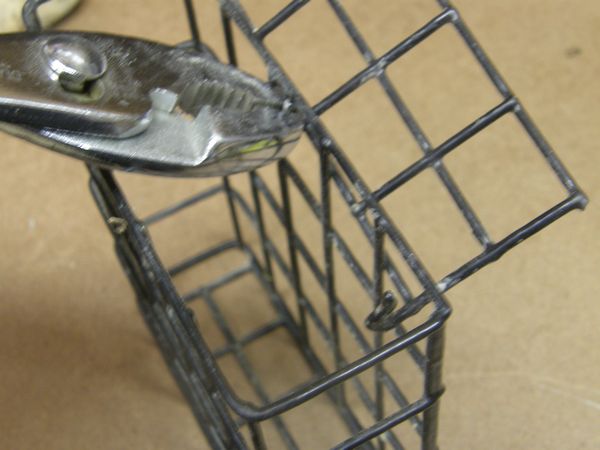 |
||
An early starting point is to remove the door of the cage. This is quite easy by just opening the wire that forms a type of hinge. These can always be replaced. |
||
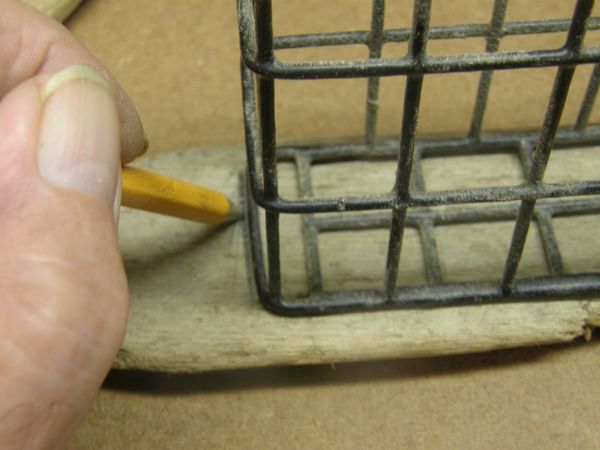 |
||
To cut the wood chosen for the bottom, place the cage on it with the loading opening at the top, mark each end. Cut it to this size, making sure it is the width of the cage. |
||
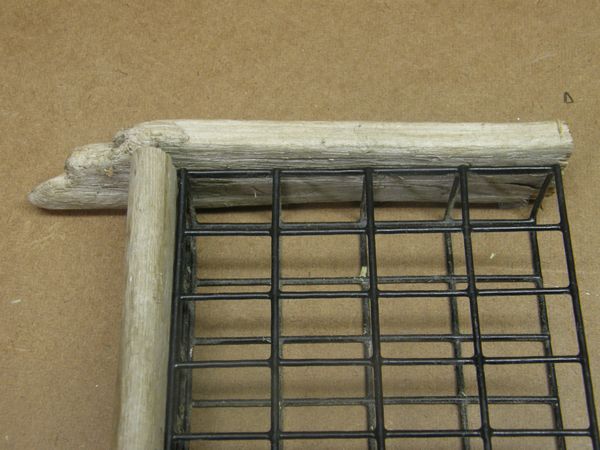 |
||
Leaving the natural looking uprights an inch or so below the bottom, mark it where the bottom will be attached. From there, place the cage on it and cut off the surplus above the cage. Do the same to the other upright and nail the 3 pieces together. |
||
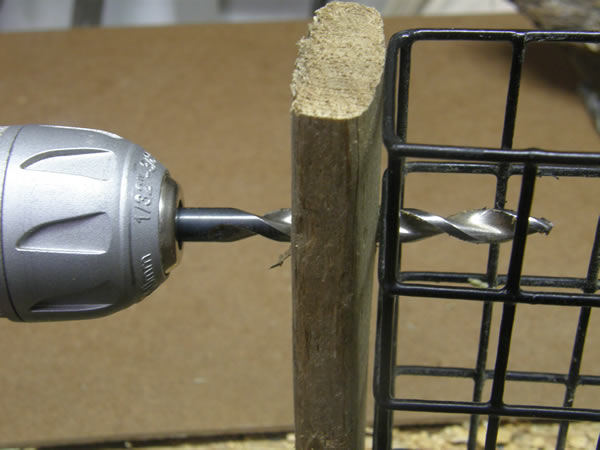 |
||
We are using bolts for holding the cage in place and for the hanging cord. Drill a hole large enough for the bolt to go through just below one of the wire ribs on the cage. |
||
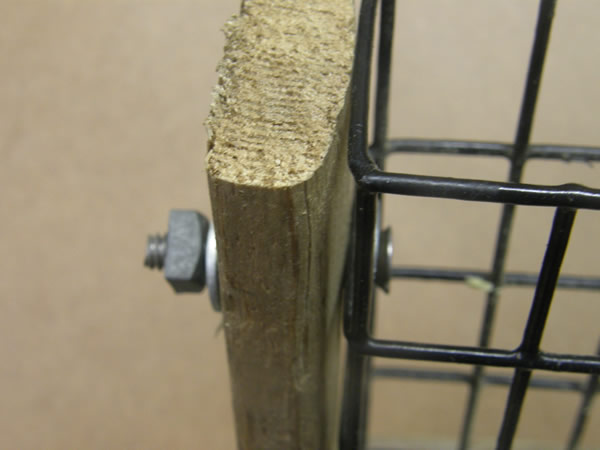 |
||
Using a bolt with a washer on, push it through the hole and loosely add another washer and the nut to the bolt. |
||
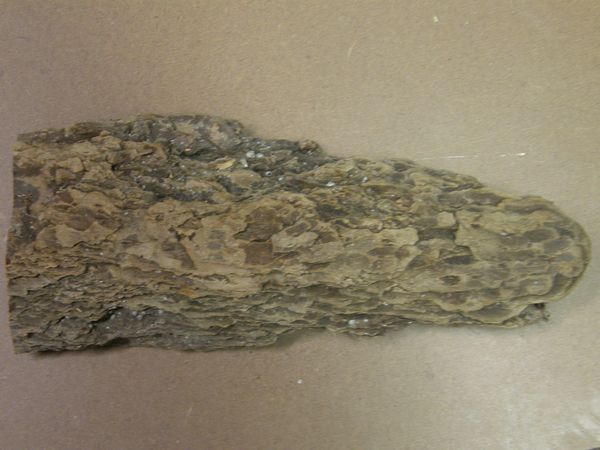 |
||
We chose a piece of bark covered driftwood for the tail piece. |
||
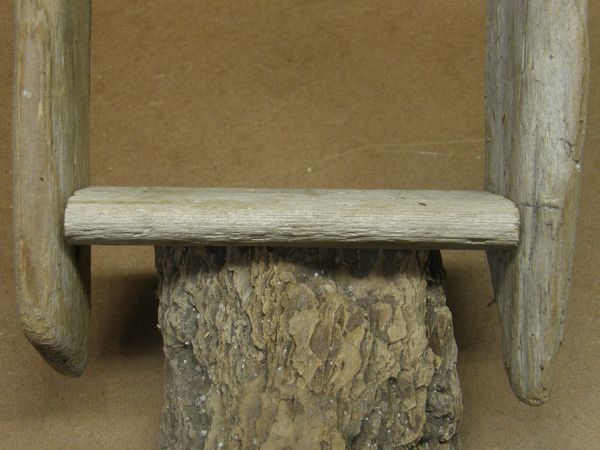 |
||
With both sides attached, the tail can be nailed on through the bottom. So far it would look something like this. |
||
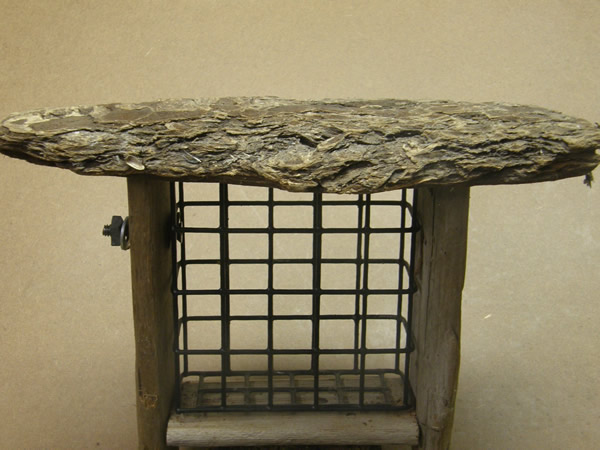 |
||
Place the roof on the sides and mark the outside of each end. |
||
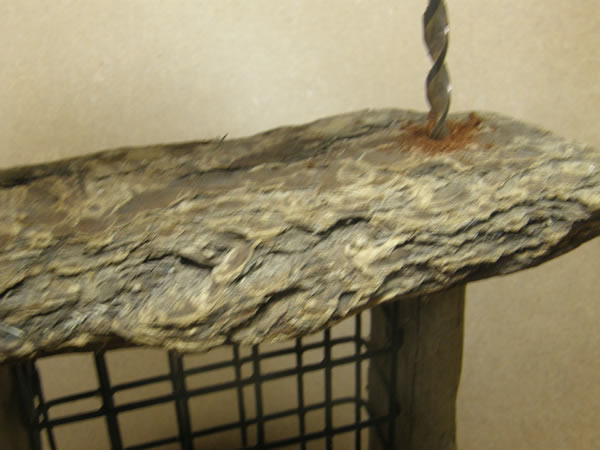 |
||
A drill can make a mark where the cord will go through. Remove the roof and on the bench drill through both ends. |
||
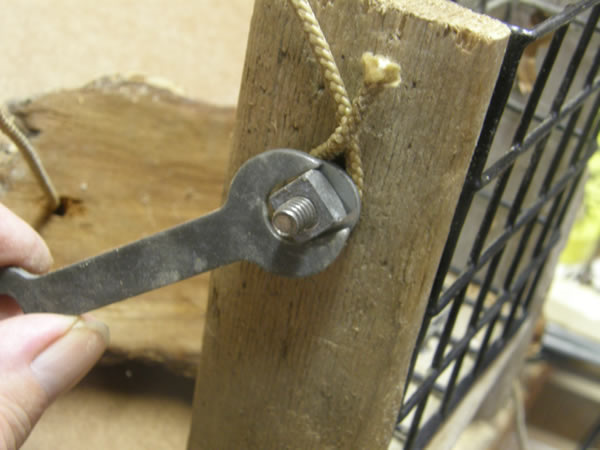 |
||
Feed the cord through the hole and wrap it around the bolt, behind the washer, and tighten it. Allow what length of cord you need for hanging the feeder, and do the same with the other end. The excess cord can be cut off. |
||
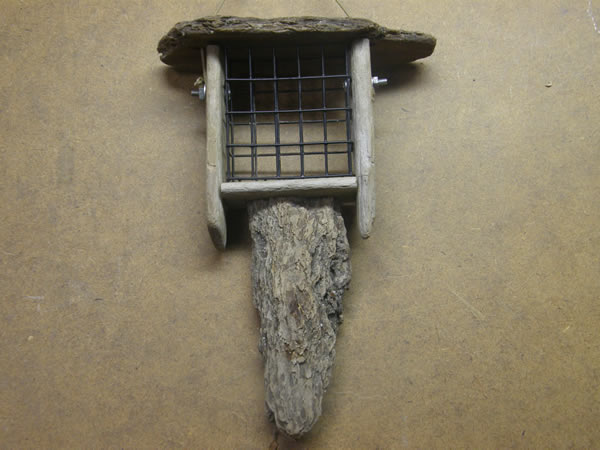 |
||
It should look like this. the top can be lifted up for filling the cage. The tail piece can always be left off for a plain feeder. |
||
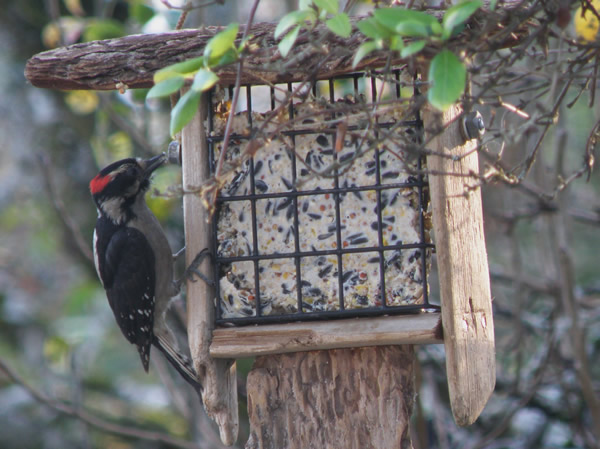 |
||
Put in a suet block, hang it up and get your camera. This downy was here in a couple of minutes. |